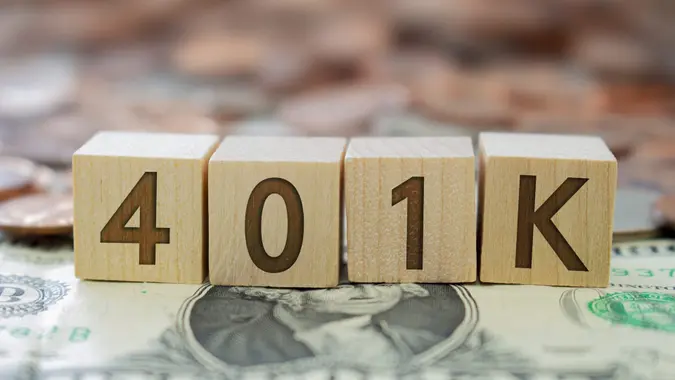5 Things You Must Do When Your Retirement Savings Reaches $100K

Commitment to Our Readers
GOBankingRates' editorial team is committed to bringing you unbiased reviews and information. We use data-driven methodologies to evaluate financial products and services - our reviews and ratings are not influenced by advertisers. You can read more about our editorial guidelines and our products and services review methodology.

20 Years
Helping You Live Richer

Reviewed
by Experts

Trusted by
Millions of Readers
If you’ve reached the lofty level of $100,000 in your retirement savings, congratulations! This means you’ve already socked away more than many other Americans.
America’s 50 Most Expensive Retirement Towns
This isn’t a time to rest on your laurels, however. As your retirement may very well last 30 years or more, it will take more than $100,000 to fully fund it. But with a retirement account balance in the six figures, it’s often a good time to take a break and make sure that the rest of your financial life is in order as well.
Here are some of the steps you should take with your finances once your retirement savings reach $100,000.
Ensure You Are Out of Debt
While having $100,000 in your retirement account is a good step toward securing your long-term financial security, having debt along the way is a surefire recipe for disaster. With credit card interest rates now averaging about 25%, any debt you carry can rapidly spiral out of control.
If you have to divert your cash flow to pay off your debt, that’s money that you can’t sock away toward your investments. If you’ve got over $100,000 in your retirement account, it might be a good time to put those investments on hold and pay off your debt.
Pad Your Emergency Fund
An emergency fund is the cornerstone of any solid financial plan. Even if you have six figures in your retirement account, it won’t do you much good if you have a financial emergency.
If your car breaks down or you need to pay for some uncovered medical expenses, taking that money out of your retirement account could actually make things worse. Not only will you be robbing your retirement, but you’ll also pay income taxes and an early withdrawal penalty if you are younger than 59 1/2.
The other option — going into debt — is equally unappealing. Tucking away at least $1,000 into an emergency fund — and ideally, three to six months’ worth of your income — is an important step to staying solvent for the long run.
Increase Your Retirement Savings
Although having $100,000 in your retirement savings is nothing to sneeze at, it’s also not enough to fund a potentially long lifetime.
Once you’ve saved that much money, you’ve already proven to yourself that you have the financial discipline to save even more. Now, you can slowly increase the amount you put in your retirement account so that you can end up with an even bigger nest egg.
If you have $100,000 now and are saving $100 per month at age 40, for example, you’ll have about $829,000 if you retire at age 65 and earn an 8% annual return. If you can bump that up to just $300 per month instead, your account will end up closer to $1.02 million. That’s an increase of about $191,000.
Review Your Asset Allocation
It’s always a good idea to check your asset allocation at least annually, but crossing the $100,000 threshold is another good time to see exactly where you stand and how you got to where you are.
For example, it’s possible that you’re an ultra-conservative investor and have been socking away a lot of money earning a low return to reach your $100,000. In that case, you may want to consider getting a bit more aggressive so that you can achieve a higher balance by the time you retire.
On the other hand, you may have gotten to the $100,000 mark by investing extremely aggressively and being lucky enough to avoid any significant selloffs. If that’s the case, you might want to take a more balanced approach to your investing and protect the profits you’ve made to some degree.
If your investments were to get cut in half overnight, for example, you might find yourself struggling to get back to where you were, since it takes a 100% return to break even after a 50% loss.
Consult a Financial Advisor
As everyone’s financial situation is unique, sometimes the broad strokes aren’t enough to meet your specific needs. This is why it’s often a good idea to consult a financial advisor once you have retirement savings of at least $100,000.
A good advisor will take the time to understand your investment objective, risk tolerance and overall financial needs and help you develop a more holistic approach to your money. For example, while you have done a good job building up your retirement account to six figures, you might not have thought about beneficiary planning, Social Security claiming strategies, end-of-life planning and any insurance you might need to help protect your assets.
A seasoned professional may also offer suggestions as to additional investment options you might want to consider in your retirement account that could better suit your needs.
 Written by
Written by  Edited by
Edited by 

























